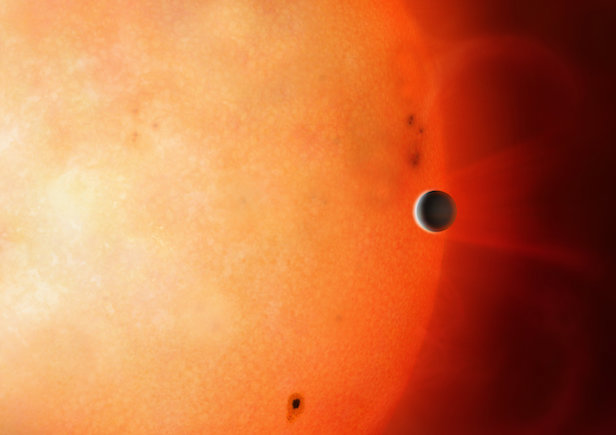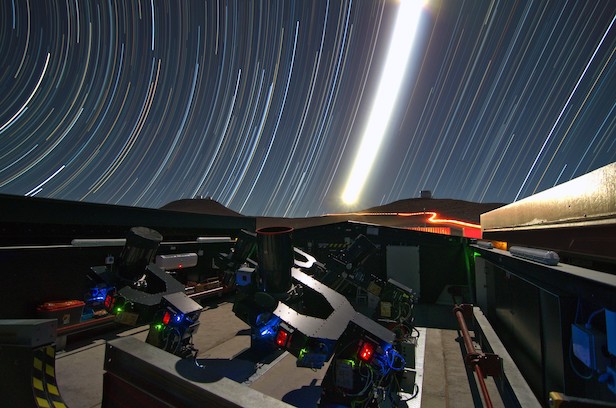A Neptune-sized exoplanet has been discovered in the most unlikely of places
The University of Warwick-led team discovered the exoplanet NGTS-4b, which has been nicknamed ‘The Forbidden Planet’

‘The Forbidden Planet’ is hotter than Mercury at 1,000 degrees Celsius (1,800 degrees Fahrenheit). Image credit: Mark Garlick/University of Warwick
An exoplanet smaller than Neptune with its own atmosphere has been discovered in the Neptunian Desert by an international collaboration of astronomers, with the University of Warwick, in the United Kingdom, taking a leading role. New research, led by Dr Richard West including Professor Peter Wheatley, Dr Daniel Bayliss and Dr James McCormac from the Astronomy and Astrophysics Group at the University of Warwick, have identified the rogue planet.
NGTS-4b was discovered using the state-of-the-art Next-Generation Transit Survey (NGTS). NGTS is situated at the European Southern Observatory’s Paranal Observatory in the heart of the Atacama Desert, Chile. It is a collaboration between UK Universities Warwick, Leicester, Cambridge, and Queen’s University Belfast, together with Observatoire de Genève, DLR Berlin and Universidad de Chile.
NGTS-4b, also nick-named ‘The Forbidden Planet’ by researchers, is a planet smaller than Neptune but three times the size of Earth and is 920 light-years away from Earth. It has a mass of 20 Earth masses, and a radius 20 percent smaller than Neptune, and is 1,000 degrees Celsius (1,800 degrees Fahrenheit). It orbits around the star in only 1.3 days – the equivalent of Earth’s orbit around the Sun of one year.
It is the first exoplanet of its kind to have been found in the Neptunian Desert. The Neptunian Desert is the region close to stars where no Neptune-sized planets are found. This area receives strong radiation from the star, meaning the planets do not retain their gaseous atmosphere as they evaporate leaving just a rocky core. However NGTS-4b still has its atmosphere of gas.

The Next-Generation Transit Survey (NGTS) is located at ESO’s Paranal Observatory in northern Chile. Image credit: ESO/G. Lambert
When looking for new planets astronomers look for a dip in the light of a star – this the planet orbiting it and blocking the light. Usually only dips of one percent and more are picked up by ground-based searches, but the NGTS telescopes can pick up a dip of just 0.2 percent
Researchers believe the planet may have moved into the Neptunian Desert relatively recently, in the last one million years, or it was very big and the atmosphere is still evaporating.
Dr Richard West, from the Department of Physics at the University of Warwick comments, “This planet must be tough – it is right in the zone where we expected Neptune-sized planets could not survive. It is truly remarkable that we found a transiting planet via a star dimming by less than 0.2 percent – this has never been done before by telescopes on the ground, and it was great to find after working on this project for a year.
“We are now scouring out data to see if we can see any more planets in the Neptune Desert – perhaps the desert is greener than was once thought.”
Try 5 issues of All About Space for just £5! Hurry though, offer ends soon.

Keep up to date with the latest news in All About Space – available every month for just £4.99. Alternatively you can subscribe here for a fraction of the price!




